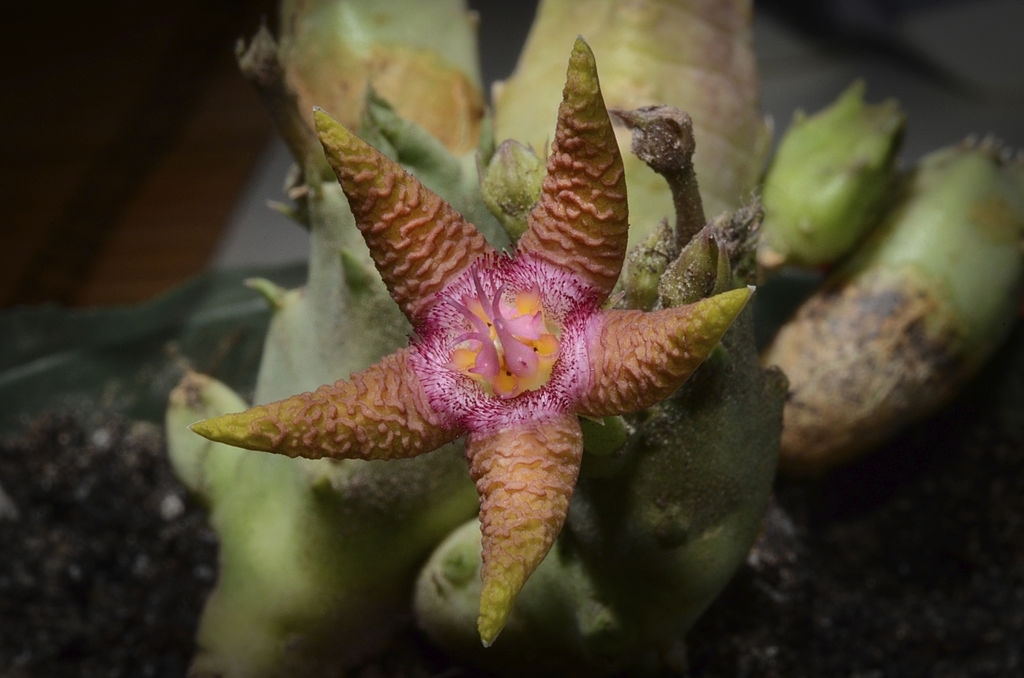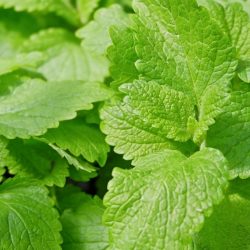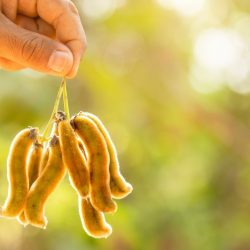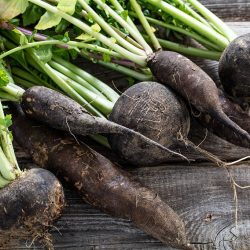Caralluma flowers give off such a putrid smell that the Arab nomads nicknamed it qahr al-luhum (carnal sore, abscess). Over time and trade, the plant arrived in the West where its name was Latinized in Caralluma . It is a so-called “succulent” plant: it is capable of storing water in its stems and leaves . In fact, it was traditionally used by the Indians to quench thirst , but also to reduce or suppress appetite , and to increase resistance during hunting periods.
A little history
Used in Ayurvedic medicine , caralluma is still considered a food in India, where it grows wild in several regions and where rural populations have always consumed it. The plant is generally prepared and used as a vegetable, raw, cooked or canned. It is sometimes used as a “famine food” during times of food scarcity .
What are the main pharmacological properties of the aerial parts of Caralluma?
Appetite moderating effect:
Caralluma adscendens is from the same family as Hoodia gordonii , a cactus from South Africa known for its positive effects on satiety . Their mode of action to reduce hunger is similar. The compounds responsible for this action appear to be the pregnan glycosides.
These active ingredients, abundant in caralluma, send a satiety signal to the brain and more precisely to the hypothalamus, responsible for controlling hunger, which explains the appetite suppressant action of caralluma .
Lipolytic properties:
Caralluma’s pregnant glycosides slow down fat storage in the body , by inhibiting enzymes involved in lipogenesis including citrate lyase.
A study carried out by a laboratory, mentioned by the European Institute of Plant Substances (IESV), evaluated the lipolytic activity of a fluid extract of fresh plants standardized in glycerin solution on adipose tissue explants in culture ( ex vivo) . This 10-day study followed the following protocol:
- Treatment equivalent to 10ml / day in an individual weighing 90 kg
- Determination of excreted lipids (in the medium)
- Morphological analysis of adipocytes
The results obtained demonstrated an increase in the excretion of fatty acids by 92% and a significant decrease in the size of adipocytes, which shows that caralluma seems to exert a lipolytic effect .
An in vitro study has shown that extracts of caralluma at various concentrations inhibit the division of preadipocyte cells, limiting the development of adipocytes .
Hypoglycemic and metabolic properties:
Following several studies, caralluma decreases food intake in a dose-dependent manner, but protects against atherosclerosis and improves the blood lipid profile. It also helps reduce waist circumference, as shown in an Australian study from 2013. Hence its interest in cardiovascular prevention in obese or overweight subjects .
Other properties:
A 2014 review of the literature mentions the efficacy of the plant genus Caralluma in several pharmacological activities in vitro and in vivo , in particular antimicrobial, antioxidant and anticancer . This bioactivity could be due to the presence of pregnan glycosides, flavonoid glycosides and flavones present in caralluma.
In particular, a 2019 study showed that the hydromethanolic extract of Caralluma adscendens var. attenuata exerts an apoptotic-mediated cytotoxic effect on cancerous cell lines in the colon and liver.
Are there any precautions for use with Caralluma?
Precaution for use:
- Despite the absence of toxicity, as a precautionary principle due to the lack of scientific studies, caralluma is not recommended for pregnant or breastfeeding women and children under 12 years old.
- No drug interactions have been reported so far.
How to take Caralluma and in what dosage?
Dry form:
- As a food supplement, alone, in powder form or in capsules.
Liquid form:
- Standardized fluid extract of fresh plant : 5 to 10 ml per day in a glass of water, preferably in the morning.
Caralluma as a masterful preparation of standardized extracts in liquid form (EPS)
In combination with guarana :
In moderation of appetite, especially in aid in weight loss.
In association with griffonia :
For the moderation of appetite and sugar urges, in particular as an accompaniment to a weight loss diet.
In association with orthosiphon and sweet clover :
In the slimming aid in case of overweight with fluid retention and poor venolymphatic return.
In association with piloselle and red vine :
In the case of cellulite and overweight.
In combination with turmeric :
To treat overweight and obesity, with or without hepatic steatosis, in particular to aid in weight stabilization following a phase of weight loss.
In association with milk thistle :
For weight loss aid or weight stabilization in the context of metabolic syndrome or type 2 diabetes.
In combination with ginseng :
For the regulation of blood sugar in an overweight or obese subject, in particular in the event of overwork and stress .
In association with the olive tree :
For the regulation of glycemia in an overweight or obese subject, in particular in a context of arterial hypertension .
Medical bibliographic sources and clinical trials :
- Jayakar B. et al., Effect of Cralluma attenuata in norma and alloxan induced diabetic rats, J Herb Pharmacother, 2004
- Kuriyan R. et al., Effect of Caralluma fimbriata extract on appetite, food intake and anthropometry in adult Indian men and women, apetite, 2006
- Venkatesh S. et al., Antihyperglycemic activity of Caralluma attenuate, Fitoterapia, 2003
- New Dieetary Ingredient Notification: Caralluma Fimbriata Extract, 2004
- Astell K. et al., A pilot study investigating the effect of Caralluma fimbriata extract on the risk factors of metabolic syndrome in overweight and obese subjects: a randomized controlled clinical trial, 2013
- Kamalakkannan S. et al., Effect of Caralluma Fimbriata Extract on 3T3-L1 Pre-Adipocyte Cell Division, Food and Nutrition Sciences, 2011
- Adnan M. et al., A review on ethnobotany, phtytochemistry and pharmacology of plant genus Caralluma R. Br, The journal of pharmacy and pharmacology, 2014
- Jyothi M.V et al., Apoptosis Mediated Cytotoxic Effects of Caralluma adscendens var. attenuate on Colon (HT29) and Hepatic (HepG2) Cancer Cell Lines, J Pharm Bioallied Sci., 2019





